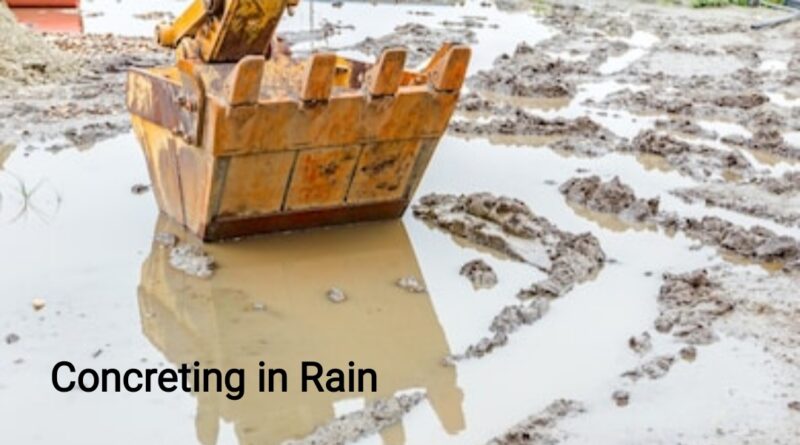Civil Engineer remember these point while concreting in Rainy season
Civil Engineers should be able to fight all kinds of seasonal fluctuations. The quality of concrete is directly related to its strength, which depends on the water-cement ratio.
The work-ability is the parameter of concrete, which determines the homogeneity in the sense of quality. The rainwater increases the proportion of water in the concrete mix at the time of mixing, transporting, placing, compacting and finishing.
The concrete mix gets severely affected by rains if the concrete has yet to reach its initial setting time.
if the intensity of the rainfall is high, the mix in the upper layer of the concrete may get disturbed. After the concrete has reached the final setting time (10 hrs), rainwater turns into a source for curing the concrete.
Here are some points to remember when you are pouring concrete in the rainy season :-
Water Content
The water-cement ratio improves the work-ability of concrete, it ultimately reduces the strength to a great extent. An average increase of 0.1 of water-cement ratio reduces strength by 5%. Hence excess water, in any case, should be avoided. However, this does not mean, we cannot pour the concrete in the rainy season.

Admixtures
The use of hydrophilic crystalline admixtures when laying the concrete provides concrete with the resistance to infiltration of water under hydrostatic pressure. The admixture reacts with water and cement particles to form calcium silicate crystals that block both the pores and microcracks in the concrete, preventing the passage of water.
This reaction goes on for the entire life of concrete, serving to seal not only initial shrinkage cracks but also cracks that occur over time.
Repairs
If the surface quality of the concrete is found to be compromised, minor reparations should be made immediately after the rain stops. Singular repairs can be made using some of the same concrete or spraying cement slurry on the surface.

